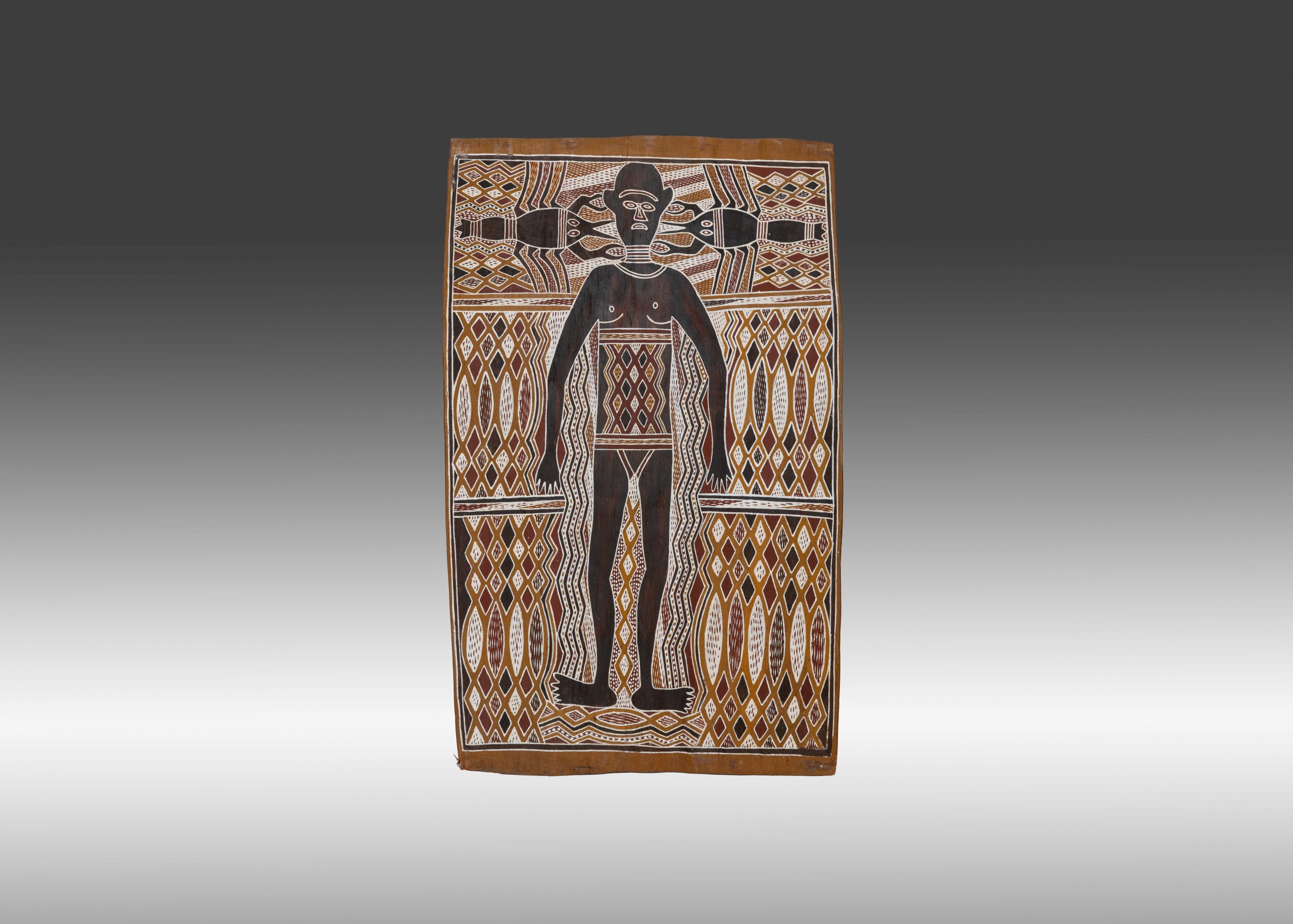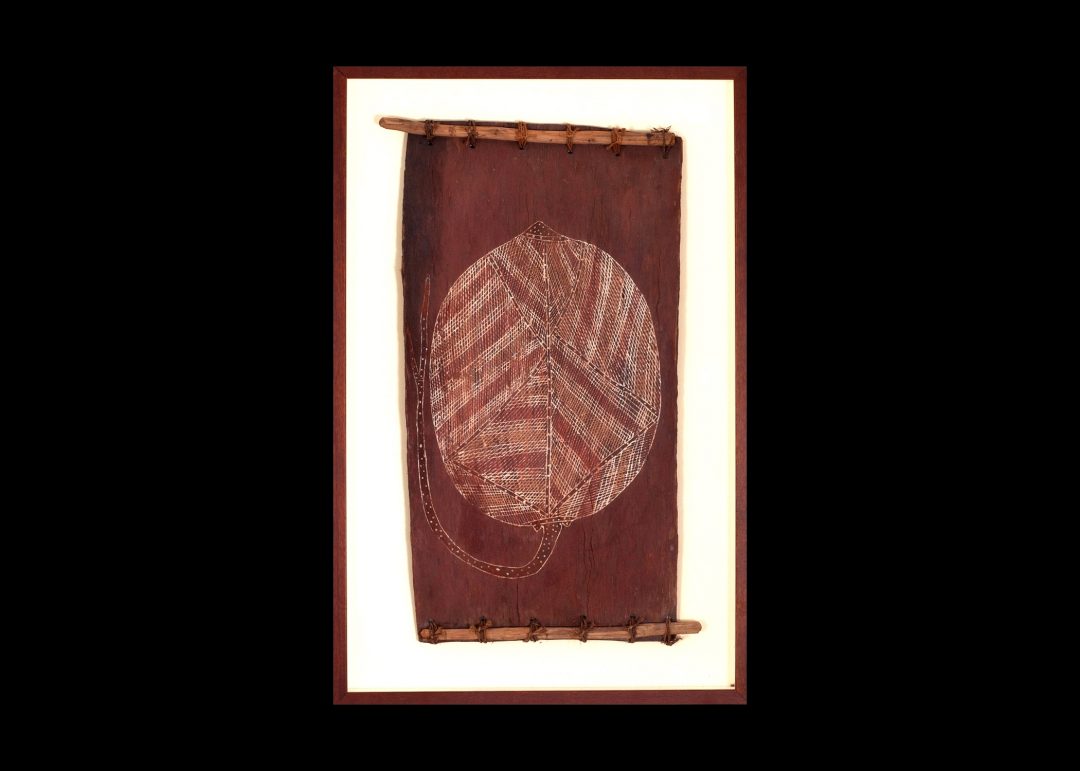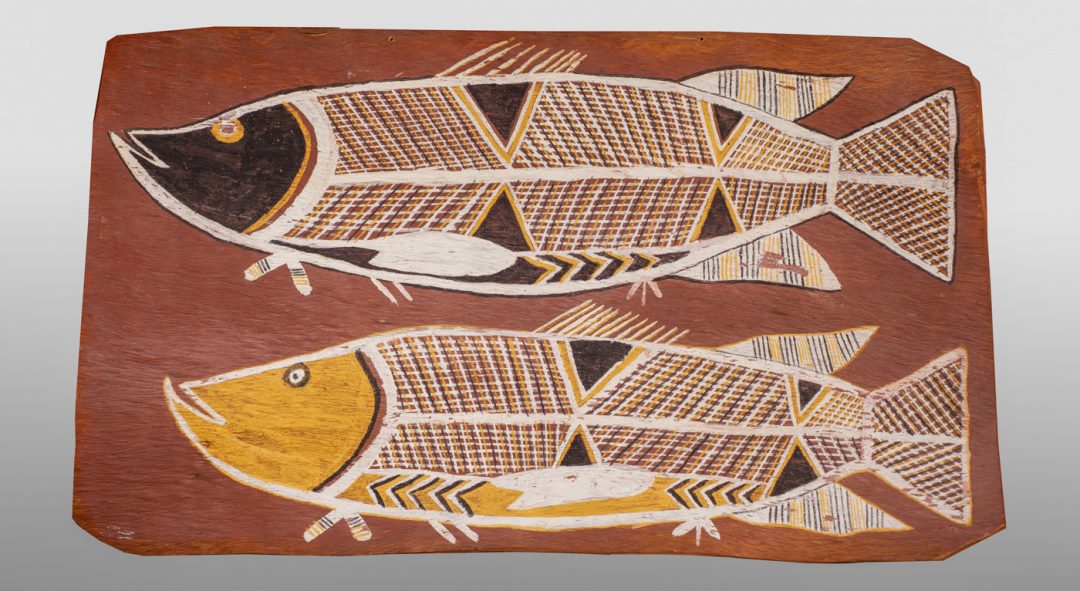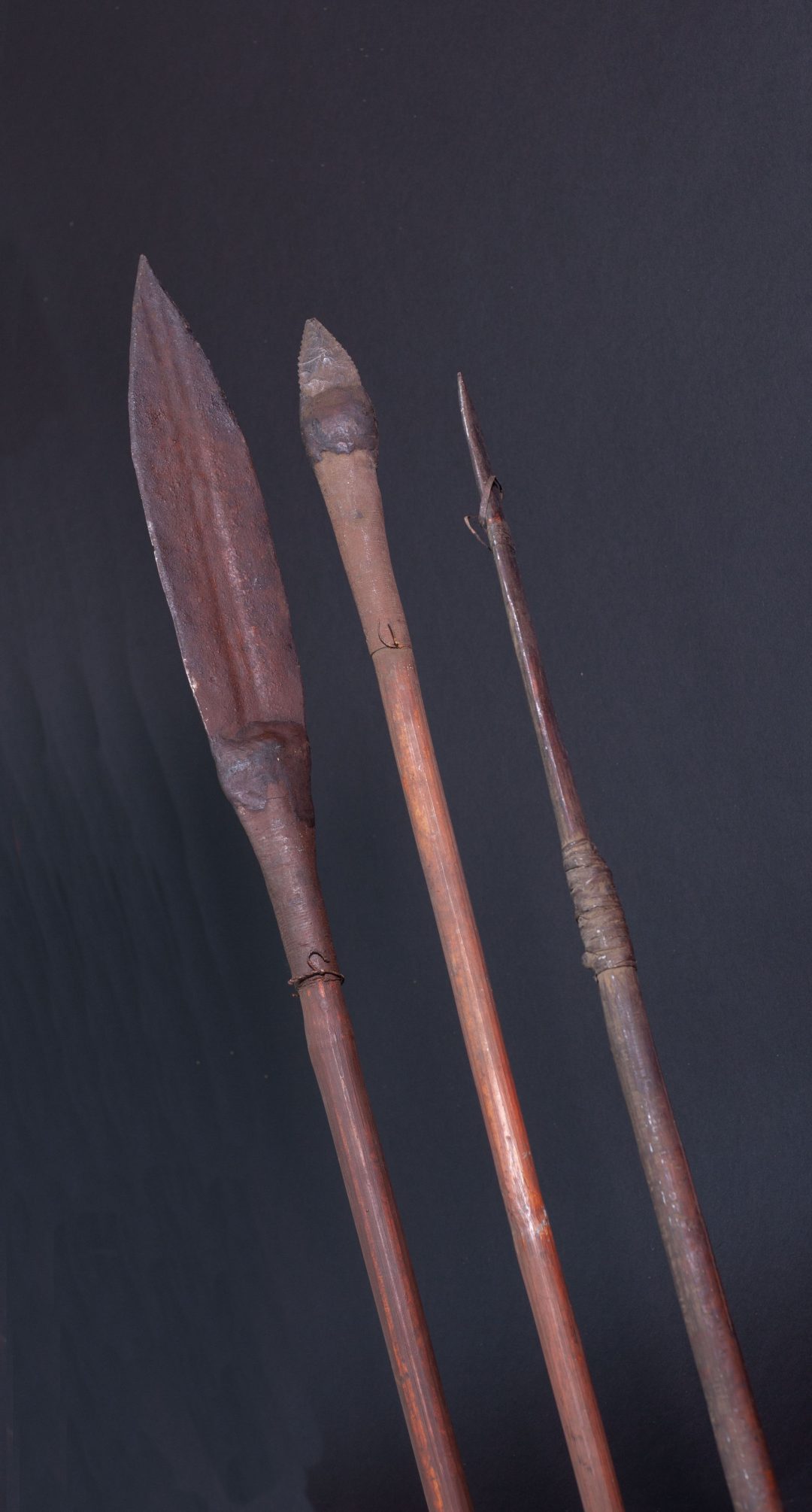Laindjung, The Ancestral hunter and the Barama Design
-
TitleLaindjung, The Ancestral hunter and the Barama Design
-
ArtistGawirrin Gumana 1935-2016
-
LocationYirrkala, North East Arnhem Land, Northern Territory
-
Dateearly 1970s
- Size70cm (L) x 44cm (W)
-
Price$1,900 AUD
This bark painting relates to the ancestral beings, Barama and Laindjung, the instigators of religious ritual and doctrine for the Yirritja moiety. Everything in the Yolŋu belief system, is made up of two moieties, the Yirritja and the Dhuwa moieties.
The painting depicts an aspect of the myth cycle of Barama and Laindjung coming to Arnhem Land. Laindjung emerged from the water. His body was covered with watermarks. These watermarks formed patterns that were eventually allocated to varies Yirritja moiety linguistic groups and clans. They also became a rangga or totemic emblem .
There are two freshwater tortoises with their heads resting on the log. These are also totems or rangga. They are represented in this painting by the regular diamond pattern which symbolizes them moving through the weeds in the river. The lines running under the arms of Laindjung, represent the sea grass swaying in the water as the tortoises swim past. The pattern with the oval shapes to the left and right side of the figure, are the sacred design that was on the thighs of Barama as he also emerged from the water. It represents pools of salt water trapped in holes after the receding tide. The freshwater crayfish were also one of Barama and Laindjung’s favorite foods
Gawirrin Gumana, also known as Gawurin, Gouarin, Gawarrin, Gawirrin, Garwirin, Gawerin,
Gawirrin’s works are in the:
National Gallery of Victoria
National Gallery of Australia
National Museum of Australia
Australian National Maritime Museum
British Museum
Kluge Ruhe Aboriginlal Art Collection USA
This bark painting relates to the ancestral beings, Barama and Laindjung, the instigators of religious ritual and doctrine for the Yirritja moiety. Everything in the Yolŋu belief system, is made up of two moieties, the Yirritja and the Dhuwa moieties.
The painting depicts an aspect of the myth cycle of Barama and Laindjung coming to Arnhem Land. Laindjung emerged from the water. His body was covered with watermarks. These watermarks formed patterns that were eventually allocated to varies Yirritja moiety linguistic groups and clans. They also became a rangga or totemic emblem .
There are two freshwater tortoises with their heads resting on the log. These are also totems or rangga. They are represented in this painting by the regular diamond pattern which symbolizes them moving through the weeds in the river. The lines running under the arms of Laindjung, represent the sea grass swaying in the water as the tortoises swim past. The pattern with the oval shapes to the left and right side of the figure, are the sacred design that was on the thighs of Barama as he also emerged from the water. It represents pools of salt water trapped in holes after the receding tide. The freshwater crayfish were also one of Barama and Laindjung’s favorite foods
Gawirrin Gumana, also known as Gawurin, Gouarin, Gawarrin, Gawirrin, Garwirin, Gawerin,
Gawirrin’s works are in the:
National Gallery of Victoria
National Gallery of Australia
National Museum of Australia
Australian National Maritime Museum
British Museum
Kluge Ruhe Aboriginlal Art Collection USA





